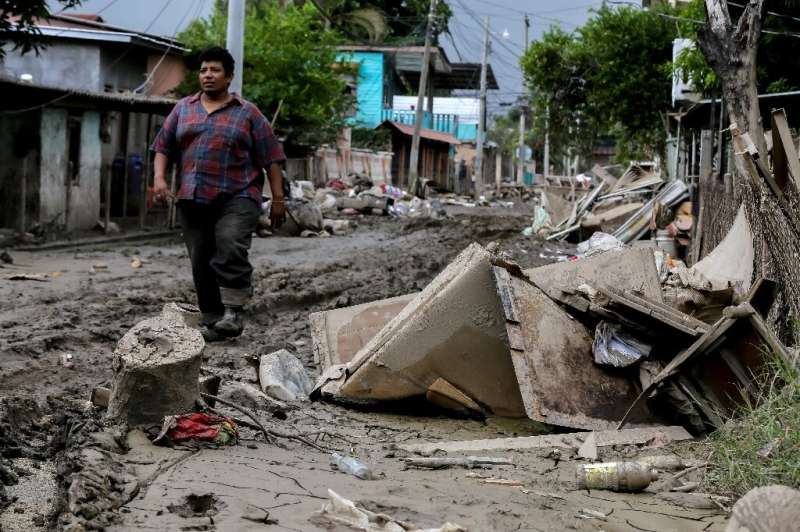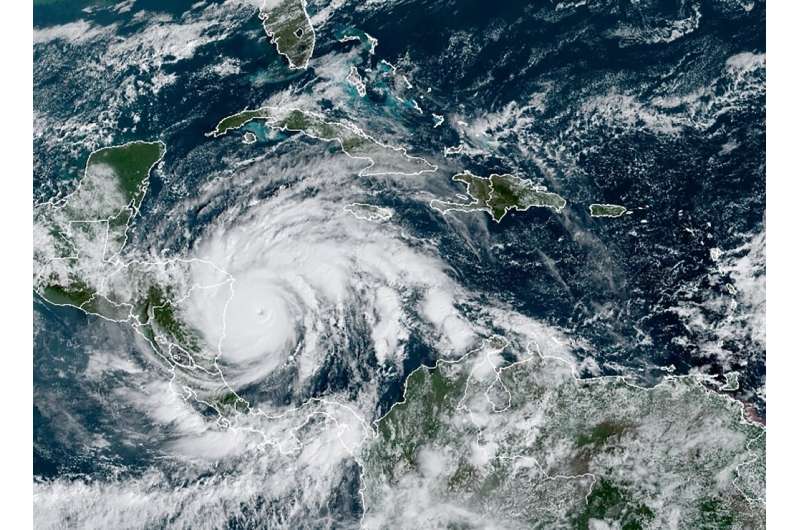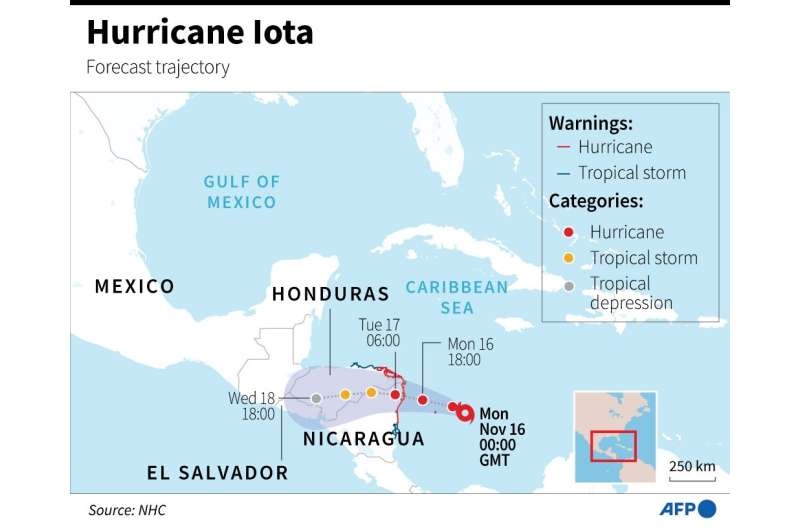Hurricane Iota tears through Central America after Nicaragua landfall

Hurricane Iota swept through northern Nicaragua with its sights set on Honduras Tuesday, after making landfall as the strongest Atlantic storm this year just two weeks after an earlier powerful storm devastated parts of Central America.
Iota became the only Atlantic hurricane this year to reach Category 5 status—the maximum level on the Saffir-Simpson wind scale—soon before it made landfall in Nicaragua on Monday evening with maximum sustained winds of 155 miles (260 kilometers) per hour.
"The wind is too strong," Jessi Urbina, a resident of the badly damaged El Muelle neighborhood in Bilwi, Nicaragua, told AFP. "It took everything: the wooden roof and the windows of my house, which is made of concrete."
The area was without power, according to provider Telcor. Trees were downed and roofs ripped off houses, including one hotel, said the disaster agency Sinapred.
Authorities had rushed to evacuate thousands of people from coastal areas of Nicaragua and Honduras in the immediate path of the storm.
The weather system has already left at least two people dead: one in the Colombian Caribbean island territory of Providencia, where it caused widespread damage, and one woman in the Panamanian indigenous community of Ngabe Bugle.
Colonel John Fredy Sepulveda, the police chief on Providencia, said the local hospital had lost part of its roof and the territory of around 6,000 people was without power.
Rescuers in the Honduran community of Tocoa helped evacuate hundreds of people who were left trapped by the rising waters of the Aguan River, which had overflowed its banks and flooded several homes.

In Nueva Jerusalen, winds had destroyed the roof of a health center, damaged at least 38 homes and uprooted trees, according to the Honduran civil protection service.
It warned that heavy rains would continue in the northern part of the country, where the Sula Valley was also considered at high risk after dozens were killed there during Hurricane Eta two weeks ago.
Record storm season
The storm dropped to Category 4 before midnight and by 9:00 am Tuesday (1500 GMT) the storm had slowed substantially, with sustained winds of 75 miles (120 kilometers) per hour.
US forecasters at the National Hurricane Center warned of "life-threatening storm surge, catastrophic winds, flash flooding, and landslides" in Central America.
Hurricane Eta made landfall in the same area as a Category 4 hurricane in early November before easing to a tropical storm, bringing widespread flooding and landslides that left 200 people dead.
Prinsila Glaso, 80, told AFP on Monday that her community south of Bilwi had been "destroyed" in the wake of Eta, and worried Hurricane Iota would leave little behind.
The Atlantic has seen a record storm season this year with 30 named storms and 13 hurricanes.
Warmer seas caused by climate change are making hurricanes stronger for longer after landfall, scientists say.

'Red alert'
The NHC forecasts Iota to rapidly weaken to a tropical storm Tuesday as it moves further inland and to dissipate over Central America by early Wednesday.
Shelters in Nicaragua, already stretched by those made homeless by Eta, were overwhelmed by new arrivals, Eufemia Hernandez, coordinator of a center at Uraccan University, told AFP, with shelters strained across the entire region.
El Salvador and Panama declared a "red alert" ahead of the hurricane's projected path through Central America. Neighboring Guatemala, with vast areas still recovering from Eta, was also on high alert.
Local media reported that more than 175,000 people had been evacuated since Saturday, mostly in areas previously flooded by Eta.
The NHC warned that Iota would dump up to 20 inches (500 mm) of rain on Honduras, northern Nicaragua, southeast Guatemala and southern Belize, with isolated totals of up to 30 inches.
© 2020 AFP





















